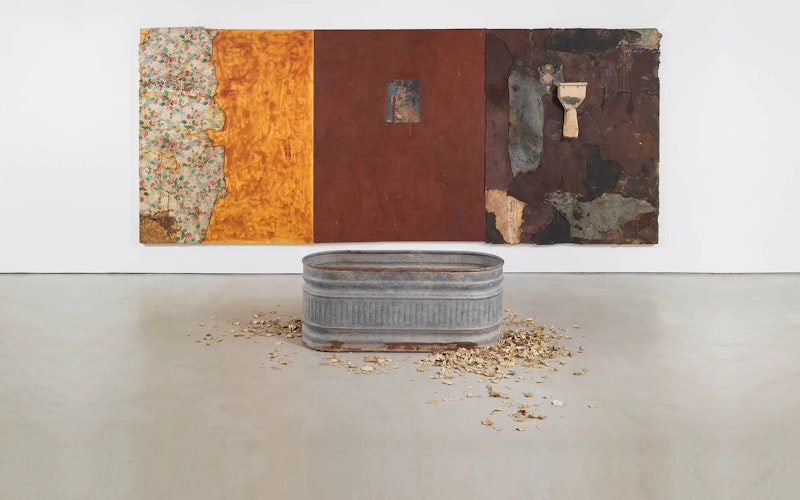Harmony Hammond: You had to be present to get a copy, or get a Xerox copy from a friend who had been at the event.
Nana Kwame Adjei-Brenyah: Yeah. But I think, it was almost too raw, too real, too much for me.
Hammond: It’s not multi-layered enough for me. It’s conceptual.
Adjei-Brenyah: It varies, it really depends.
Hammond: It was a white line drawing on black—no one could afford color in those days.
•••
Adjei-Brenyah: [Laughter] As opposed to living perpetually in this imagined future, you know what I mean?
Hammond: Not really. To be honest, I didn’t have a clue of what was going on.
Adjei-Brenyah: No one has asked me about it before.
•••
Hammond: If you do not name, you do not have a cultural history, and if you don’t have a cultural history, you do not exist.
Adjei-Brenyah: In the process of that, we kind of started saying “Killa season, killa season” like Cam’ron, I don’t know.
•••
Hammond: This absence of a heterosexual narrative situated Agnes as a woman alone; she was strong, did it her way, had this Canadian pioneer ruggedness and was a bit crazy.
Adjei-Brenyah: The way I justify it in my brain is that she’s becoming something extra human now.
Hammond: Sure. Everybody understood that.
Adjei-Brenyah: Through revision, you feel the pressure, so to speak.
Hammond: I wore faux leather pants and t-shirts with the sleeves rolled up like Jimmy Dean.

